|
|



Nocturnal animals too
have circadian rhythms, even though these animals are active
at night and rest in the daytime. Cockroaches, for example,
are very good models for research on circadian rhythms, because
their activity can be readily recorded and their nervous
systems are relatively simple and a convenient size. |
When mice are placed
in temporal
isolation, their autonomous circadian rhythm has
a period of about 23.5 hours. In hamsters , it is close to
24 hours, and in humans, it ranges from 24.2 to 25.5, depending
on which studies you read. This period is thus genetically
determined by the biological
clock in each species. Interestingly, a mutation
in even just one of the many genes involved in this clock
can modify its period. |
Jet
lag and working
night shifts represent two very particular
sets of conditions in which people’s circadian
rhythms are suddenly thrown out of phase.
The changes in the seasons have a similar effect, but
over a much longer period. The reason that the changing
seasons upset people’s circadian rhythms is that
people tend to get out of bed at just about the same time
every day, because of their family and work obligations,
whereas the time that they go to sleep varies more. As
the seasons change, the times of sunrise and sunset change
considerably, so when someone keeps getting up at the same
hour, their system gets the impression that time is somehow
shifting. Seasonal
affective disorder, experienced in winter
by some people in Northern countries where the days are
very short, may well be related to this shift in the body’s
circadian clock.

|
|
|
Our natural environment
is filled with cyclical patterns and rhythms whose ultimate
origins lie in the particular configuration of our solar system.
For example, our seasonal fluctuations in temperatures and
precipitation originate in the annual revolution of the Earth
around the Sun and the tilt of the Earth’s axis of rotation.
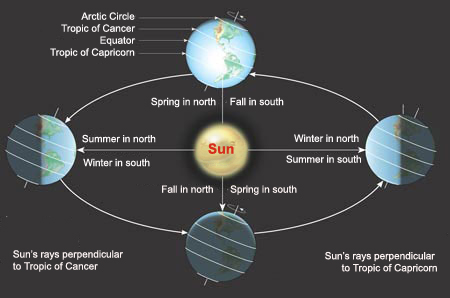
Other phenomena, such as tides, are driven
by the monthly revolution of the Moon around the Earth.
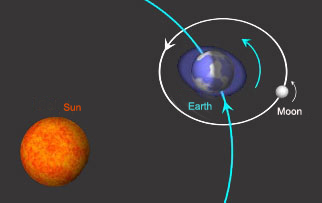
And, of course, the alternation of day and
night is due to the Earth’s rotation on its axis, with one
complete rotation taking approximately 24 hours.
The
human brain, because it has always evolved in this cyclical environment,
has adapted to it in many ways. The most obvious is the sleep-wake
cycle, which follows the alternation of day and night. But
the mammalian brain can also orchestrate cyclical behaviours
with periods much longer than a day, such as hibernation,
or much shorter, such as the respiratory cycle. The
cerebral cortex itself displays cycles whose periods are
even shorter, with frequencies of tens of cycles per second.
Thus, cycles are omnipresent in the mammalian
nervous system. Their frequencies can range from 100 cycles per
second (100 Hertz) for cortical
EEGs to just once per year (or 0.00000003 Hz) for many seasonal
behaviours, such as the mating of deer in autumn, or hibernation
in bears.
The study of these cycles (also known as rhythms) in biological
organisms is called chronobiology. By focusing
on the time dimension of human physiological and psychological
activities, chronobiology has provided a better understanding of
many phenomena, including why certain
medications are more effective when taken at particular times of
day.
A cycle or rhythm is present when a phenomenon
repeatedly goes through a peak and a trough over a specific period
of time. As just noted, the duration of this period can vary greatly.
That is why biological rhythms are generally classified into three
major categories according to their period—the
time interval separating one peak or trough from the next in a
repeating cycle.
 In
1729, the French physicist Jacques d’Ortous de Mairan
observed that the mimosa shrub “knew” when it
was daytime and when it was nighttime, because it opened
and closed its leaves, respectively, at those times, even
when it was enclosed in a box that let in no light. This
plant was therefore responding not to the sun but to an internal
biological clock. Today we know that most living organisms
have their own biological clocks. In
1729, the French physicist Jacques d’Ortous de Mairan
observed that the mimosa shrub “knew” when it
was daytime and when it was nighttime, because it opened
and closed its leaves, respectively, at those times, even
when it was enclosed in a box that let in no light. This
plant was therefore responding not to the sun but to an internal
biological clock. Today we know that most living organisms
have their own biological clocks.
|
|
|



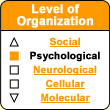



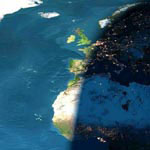
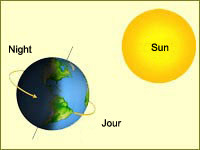

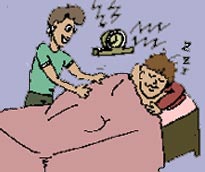

 In
1729, the French physicist Jacques d’Ortous de Mairan
observed that the mimosa shrub “knew” when it
was daytime and when it was nighttime, because it opened
and closed its leaves, respectively, at those times, even
when it was enclosed in a box that let in no light. This
plant was therefore responding not to the sun but to an internal
biological clock. Today we know that most living organisms
have their own biological clocks.
In
1729, the French physicist Jacques d’Ortous de Mairan
observed that the mimosa shrub “knew” when it
was daytime and when it was nighttime, because it opened
and closed its leaves, respectively, at those times, even
when it was enclosed in a box that let in no light. This
plant was therefore responding not to the sun but to an internal
biological clock. Today we know that most living organisms
have their own biological clocks.